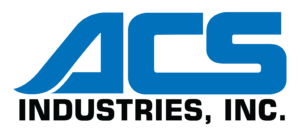Blast furnaces are responsible for approximately 70% of steel production across the globe, but this production method is also responsible for almost two tons of annual C02 emissions. The steel industry is extremely carbon-intensive, and this is mainly due to the blast furnace process, which involves smelting iron ore with coal-derived coke at high temperatures, releasing CO2 emissions. Available technologies such as top gas recovery can reduce blast furnace emissions by as much as 40% and recycling and scrap usage can reduce emissions even further, but no steel production system utilizing blast furnaces can achieve zero emissions.
There is a short-term opportunity to overhaul this industry in favor of greener practices, as about 70% of all steel furnaces worldwide will require relining by 2030. Plants already undergoing maintenance could shift toward a newer model of Direct Reduction of Iron ore systems (DRI) powered by hydrogen, feeding into Electric Arc Furnaces (EAF). If the electricity powering the furnaces is renewably generated, this sector could effectively eliminate all harmful emissions (2).
There have been a handful of pilot facilities around the world which are currently validating green steel production methods including H2Future: a facility testing the application of hydrogen as a reducing agent (6), and a Linz, Austria plant featuring an electric arc furnace with a capacity of 180 tons per charge.
A major milestone in the global transition to green steel production in has been reached as Linde revealed last week that it will invest $150m into an on-site air separation unit (ASU) in Boden, northern Sweden, to supply industrial gases to the world’s first large-scale green steel production plant. The ASU will generate oxygen, nitrogen, and argon for H2 Green Steel’s integrated plant, which will use the latest technology to reduce carbon emissions by up to 95% compared to traditional steelmaking.
“We are moving at full speed on the journey to accelerate the decarbonization of the steel industry through the construction of our plant in Boden,” said Maria Persson Gulda, CTO at H2 Green Steel. “Air separation is an important part of this work, providing gases required in various stages of the steelmaking processes” (5).
Nearby, Europe’s biggest industrialized country, Germany, has now introduced a low-emissions steel standard called Less. Many German steel producers had been using their own standards for green steel production, making overall industry decarbonization progress hard to track. These new standards seek to achieve greater harmonization and to provide a competitive edge to German producers in the international market for green steel. Germany’s steel transition is part of an overarching goal to achieve a climate-neutral economy by 2045 (1).
The world’s largest steel producing country by a large margin, China, is also attempting to retain its competitive edge in the steel industry through the implementation of environmental protection measures such as the SteelZero initiative, which aims to achieve 100% net-zero steel production across the country by 2050.
The steel industry currently accounts for 8% of China’s greenhouse gas emissions. Because demand for Chinese steel is expected to increase into the future as more countries around the world continue to develop, a decarbonization of this industry is crucial if China wishes to reach it’s target carbon neutrality date of 2060. However, evidence of this transition in China have been less than encouraging to this date; China already seems to be falling short of targets to produce 15% of its crude steel in EAFs by 2025, as this figure stood at 9.7% in 2022, and only rose to 10% in 2023. The transition has been delayed by various factors such as a recent slowing of steel demand, limited scrap supplies, and electrical restrictions (4).
We already have access to adequate technology to produce carbon neutral steel across the globe. All that’s left is to implement this technology by overhauling existing steel making infrastructure. There will be some pains involved in the transition considering a major overhaul of the energy grid will be needed to supply enough renewable electricity to steel producers, and this grid transformation itself will require huge quantities of steel. These hurdles will all prove to be surmountable as long as governments and companies around the world continue making investments in the future instead of doubling down on lower-cost carbon intensive technologies. ACS will be watching for more and more steel makers to incorporate greener technology soon, as their blast furnaces come up for service.
An adequate supply of hydrogen is a crucial input to green steel production. DRI production replaces the blast furnace with chemical reactions that require the input of either Hydrogen or Carbon Monoxide, the more environmentally friendly option being Hydrogen. At ACS Industries we are playing our part by actively manufacturing components for Hydrogen-producing electrolyzers. Our customers around the world are ramping up electrolyzer production to meet this growing demand for hydrogen in green steel manufacturing as well as many other noble sectors.
ACS Industries is committed to the continuous improvement of environmental sustainability in all of our business areas. We strive to hold a strict code of conduct in our business practices and hold our suppliers to the same standards. The development of the green steel industry will play a large role in ensuring that all ACS steel components are produced in the most ethical and environmentally sustainable way possible, from start to finish.


